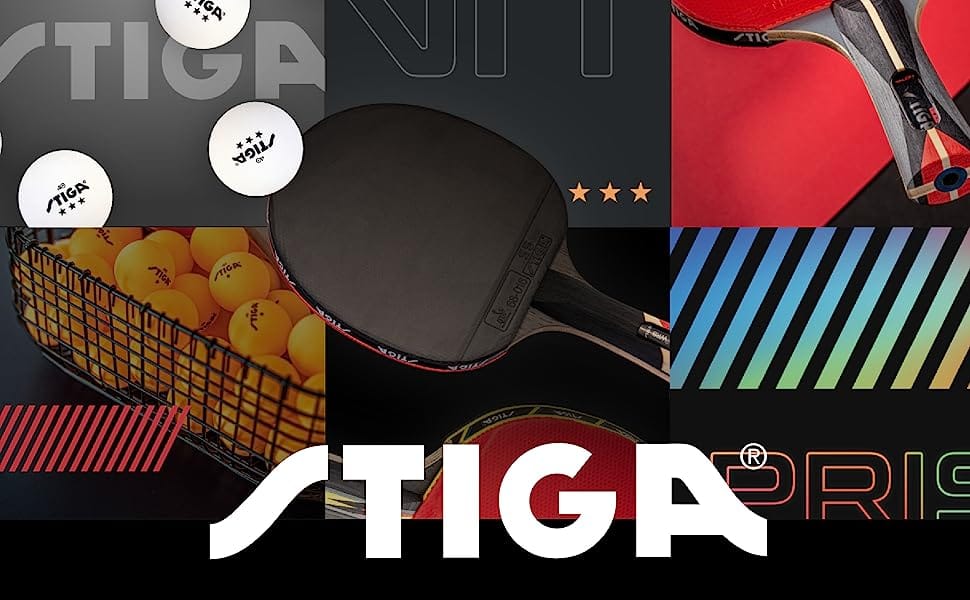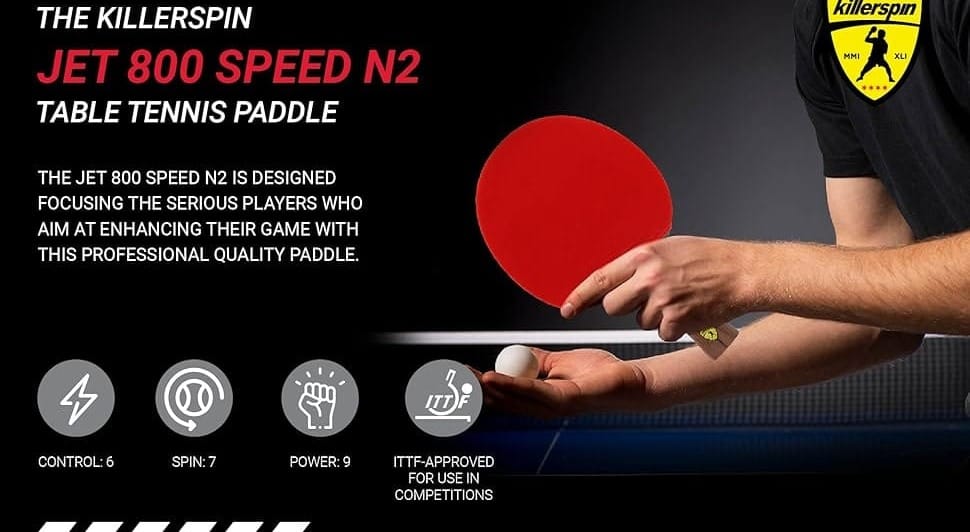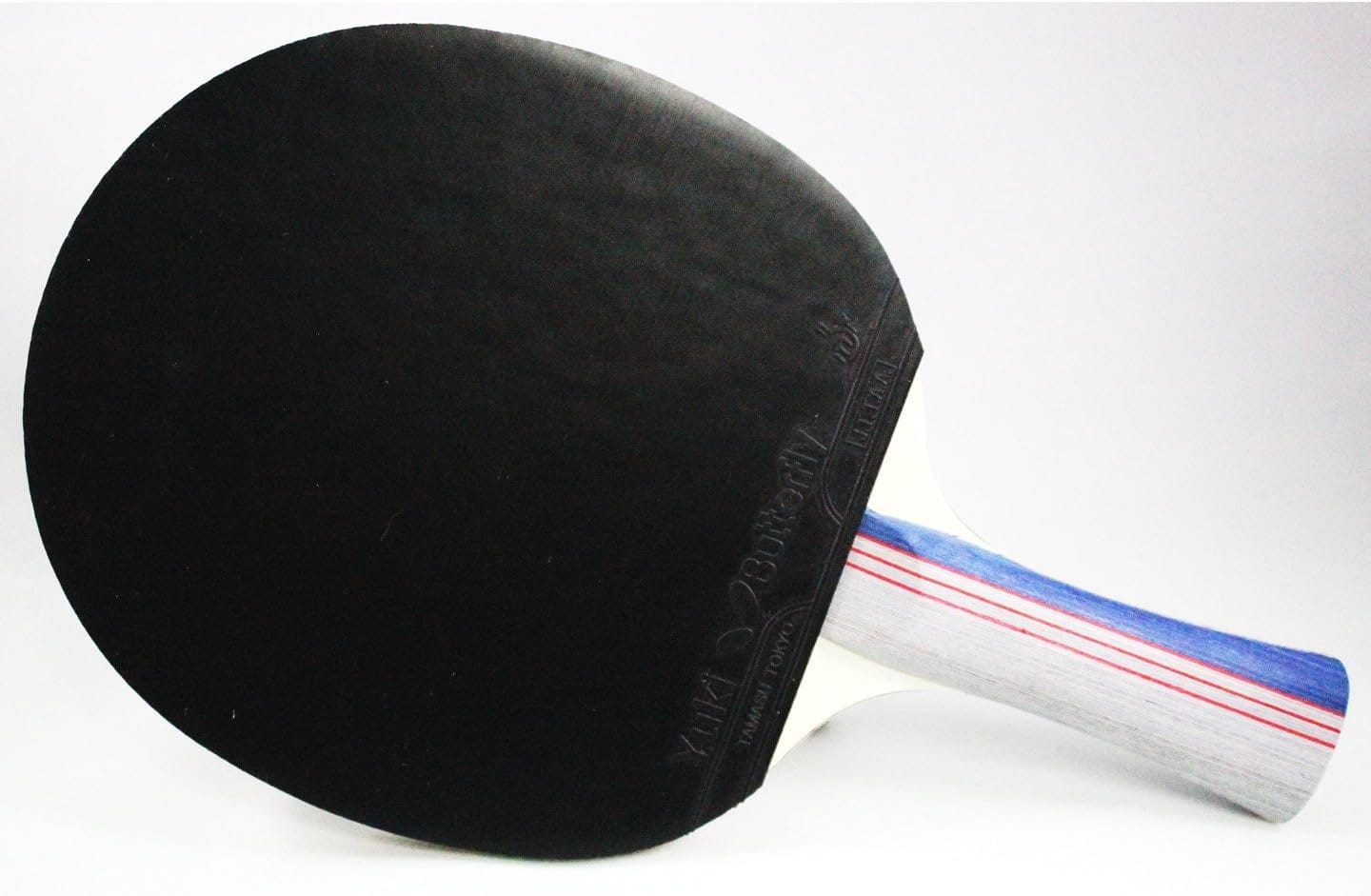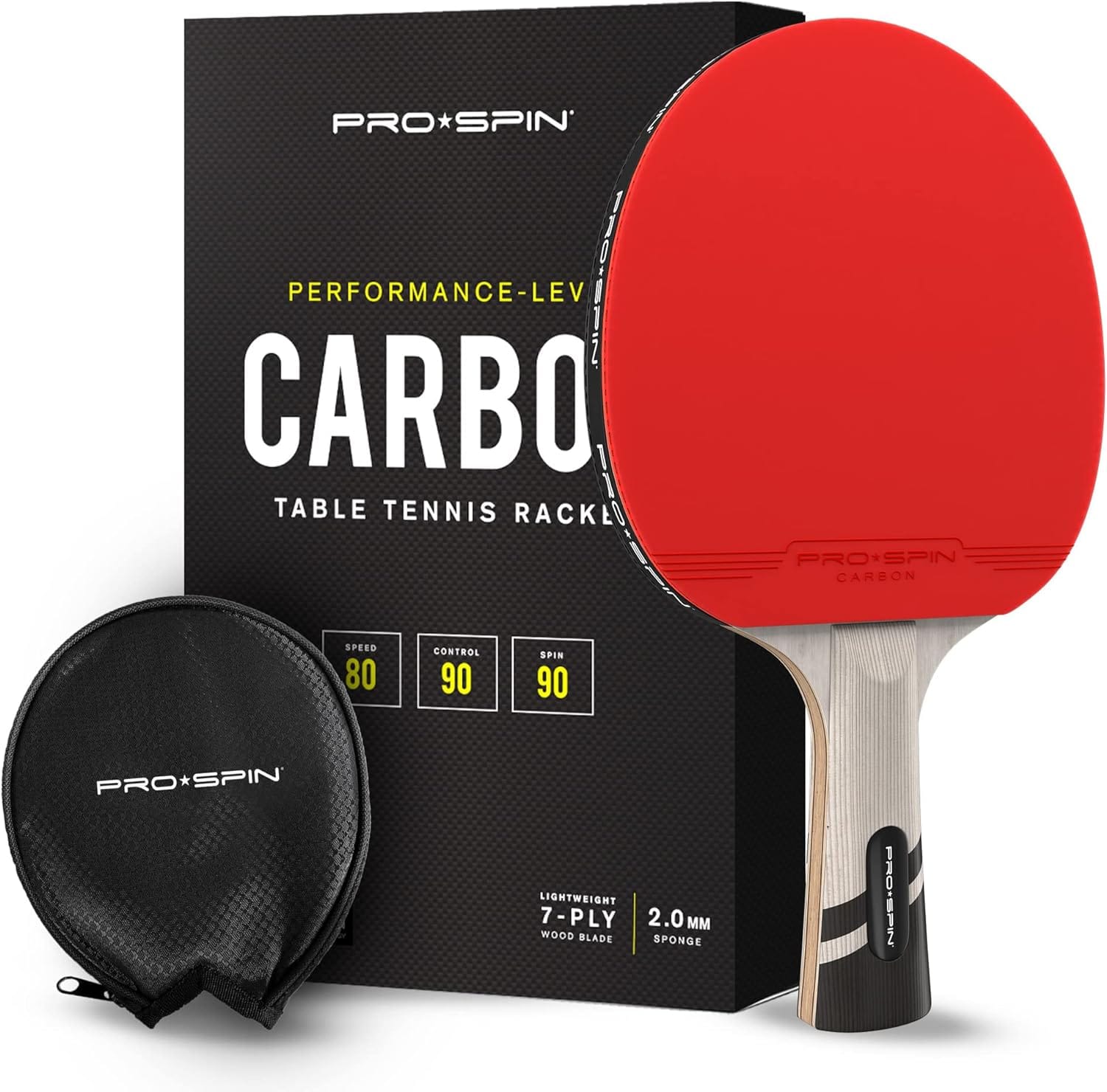A Guide to Mastering Table Tennis Racket Techniques
From beginners seeking control to advanced players craving power, our comprehensive guide unveils the top ping pong rackets that will take your game to new heights. Find the perfect match and dominate the table with precision and style!

Welcome to the wonderful world of table tennis, where lightning-fast reflexes meet a tiny, flying sphere in an epic battle of agility and finesse. Picture this, you're standing at the table, ready to unleash your killer shots, but something's missing. That's right, my friend, you need the ultimate secret weapon in your arsenal—the table tennis racket!
But wait, what makes a table tennis racket so special? What are the key factors to consider when choosing one? Don't fret, because in this article, we're diving deep into the captivating realm of table tennis rackets and unraveling the mysteries behind their design, technology, and impact on your game.
So, why should you keep reading?
If you want to take your table tennis skills to the next level, you need to understand the intricacies of the racket in your hand. Whether you're a casual player looking to impress your friends or a seasoned pro seeking that competitive edge, we've got you covered. From grip to blade composition, and rubber types to paddle weight, we'll explore the essential elements that make a table tennis racket a game-changer.
Join us on this thrilling adventure as we embark on a quest to demystify the table tennis racket and equip you with the knowledge to dominate the table. Get ready to unleash your inner ping-pong champion and discover how a small, seemingly innocuous tool can make all the difference. So, grab your paddle, take a deep breath, and let's dive into the mesmerizing world of table tennis racket mastery!
Buyers Guide
To Find The Best Table Tennis Racket
Finding the perfect Table Tennis racket can greatly enhance your table tennis experience. To help you make an informed decision, we have outlined our research criteria for selecting the best ping pong rackets.
- Determine Your Playing Style and Skill Level: Different rackets are designed to cater to specific playing styles and skill levels, so understanding your style will help you find the right type of racket.
- Blade Construction and Materials: The blade is the foundation of the racket and factors like blade thickness, number of layers, and composition to find a racket that offers the right balance of speed, control, and power for your style of play.
- Rubber Type and Thickness: The rubber on the racket's surface greatly influences spin, speed, and control. Check for different rubber types—pips-in, pips-out, or anti-spin—and consider the thickness of the rubber sponge. Thicker sponges generally offer more speed, while thinner sponges provide better control.
- Grip Style and Handle: Pay attention to the racket's grip style and handle. Decide the grip style such as shakehand and penhold, so choose the one that you find most comfortable. Additionally, consider the handle shape, size, and material to ensure a comfortable grip and maximum control during gameplay.
- ITTF Approval: The rackets that are approved by the International Table Tennis Federation (ITTF) meet the standards for professional play and indicate that the racket has been tested and deemed suitable for competitive use.
- Customer Reviews and Ratings: Customer reviews and ratings of the rackets are great insights into their performance, durability, and overall satisfaction. Consider feedback related to spin, speed, control, and build quality. Multiple reviews can provide a more accurate understanding of the racket's pros and cons.
- Price and Value for Money: It's important to find a racket that offers a good balance between quality and affordability.
- Brand Reputation and Warranty: We put a special emphasis on the reputation of the brands while selecting rackets that include a history of producing reliable and high-quality rackets. Warranty offered by the manufacturer is important to ensure that have the proper coverage in case of any manufacturing defects or issues.
With these guidelines and conducting thorough research, you can find the best ping pong racket that suits your playing style, skill level, and budget. With the right ping pong racket in your hands, you'll be well-equipped to enjoy exciting matches and improve your table tennis skills.
Top Picks
STIGA Pro Carbon Performance-Level Table Tennis Racket
Stiga Pro Bottom Line
The STIGA Pro Carbon Performance-Level Table Tennis Racket is for players seeking exceptional speed, precision, and control due to its premium construction. The Pro Carbon is constructed with a carbon fiber blade that is exceptionally thin and lightweight for increased speed, while the tapered handle provides added comfort and control.

Pros Of Stiga Pro
- High-performance racket designed for competitive play.
- Carbon technology provides excellent speed and power.
- ITTF-approved rubber for an enhanced spin.
- Comfortable handle with a good grip for precise control.
Cons About Stiga Pro
- Not ideal for beginners due to its advanced features.
- Some users may find the handle to be slightly bulky.
Killerspin Jet 800 Speed N1 Table Tennis Racket
Bottom Line about Killerspin
The Killerspin Jet 800 Speed N1 Table Tennis Racket is a powerhouse designed for players who crave lightning-fast shots and aggressive gameplay with its superior speed, spin, and control.

Pros - Killerspin Jet 800
- Designed for players who crave speed and power.
- Five-ply wood blade with carbon layers for enhanced performance.
- ITTF-approved.
- Stylish and sleek design.
Cons - Killerspin Jet 800
- Not suitable for beginners or players with less experience and a bit heavy.
Butterfly 401 Table Tennis Racket Set
Bottom Line about Butterfly Racket
Suitable for beginners and intermediate players, this racket offers excellent value for durability, control, and spin with its comfortable grip and reliable performance.
Pros of Butterfly Racket
- Perfect for beginners and intermediate players.
- Provides a good balance of control, spin, and speed.
- ITTF-approved.
- Comfortable handle for a solid grip.
Cons about Butterfly Racket
- More experienced players may outgrow its performance capabilities.
- The paddle case quality could be improved.
PRO SPIN Ping Pong Paddles
Bottom Line - PRO SPIN Ping Pong Paddles
This is a top-tier paddle designed for serious players seeking exceptional speed, power, and spin with its professional-grade construction and superior performance.
Pros - PRO SPIN Ping Pong Paddles
- Suitable for advanced players and tournaments.
- Pimples-in rubber offers exceptional spin and control.
- Durable and well-constructed for long-lasting performance.
- Excellent blade and rubber combination for offensive play.
Cons - PRO SPIN Ping Pong Paddles
- Not recommended for beginners or recreational players.
- The handle may feel too thin for some users.
FAQs
Q: What paddles do pros use in ping pong?
Answer: Professional ping pong players often use custom-made paddles tailored to their playing style and preferences. However, there are a few popular paddle brands and models that are commonly used by professionals check our top picks.
It's important to note that professional players often customize their paddles with specific rubbers and blade combinations to suit their individual preferences. These paddles may not be readily available as off-the-shelf options, but their features and technologies can provide insights into the types of paddles favored by pros.
Q: Is Stiga better than Butterfly?
Answer: The comparison between Stiga and Butterfly as brands are subjective and depend on individual preferences and needs. Both Stiga and Butterfly are well-respected and reputable brands in the world of table tennis, offering a wide range of high-quality products. Here are some factors to consider when evaluating the two:
- Both Stiga and Butterfly offer a diverse range of table tennis equipment including paddles, blades, rubbers, and tables. They cater to players of all skill levels, from beginners to professionals.
- Both brands have paddles and blades that are highly regarded for their performance. Stiga is often known for providing good control and feel, while Butterfly is recognized for its innovative technologies and emphasis on speed and spin.
- Both brands prioritize the quality and durability of their products. However, individual models and specific products may vary in terms of their longevity and resilience.
- Stiga tends to have a wider price range, offering options for various budgets. Butterfly is often associated with higher-end and premium products that can be more expensive.
- Ultimately, the choice between Stiga and Butterfly may come down to personal preference. Some players may have a preference for Stiga's playing characteristics and designs, while others may lean towards Butterfly's technologies and offerings.
It's important to note that individual products from both brands can vary in performance and suitability for specific playing styles. It's advisable to read reviews, try out different products, and consider your playing preferences before making a decision. Ultimately, the "better" brand will depend on your specific needs and what you value most in table tennis equipment.
Q: How do I choose a ping pong bat?
Answer: Choosing a ping pong bat, also known as a paddle or racket, is an important decision that can greatly impact your playing experience. Here are some key factors to consider when choosing a ping pong bat:
- Playing Style: Consider your playing style and skill level. Are you an offensive player who focuses on powerful shots, or do you prefer a more defensive style with better control? Different paddles are designed to cater to specific playing styles, so understanding your style will help you choose a suitable bat.
- Grip Style: Determine your preferred grip style—shakehand or penhold. The shakehand grip is the most common, where the racket handle is held similarly to a handshake. The penhold grip involves holding the racket handle between the thumb and forefinger, similar to holding a pen. Choose a bat with a handle shape and size that suits your grip style and feels comfortable in your hand.
- Blade Construction: Pay attention to the blade construction, as it greatly affects the bat's performance. Blades are typically made of wood, and different compositions and number of layers impact factors like speed, control, and spin. Beginners may opt for an all-around blade, while advanced players may prefer specialized blades for specific playing styles.
- Rubber Type and Thickness: The rubber covering on the bat's surface affects the spin, speed, and control of your shots. Pips-in rubber offers more spin and control, while pips-out rubber provides more speed. Consider the type of rubber that suits your playing style. Additionally, the thickness of the rubber sponge can affect the power and control of your shots. Thicker sponges generally provide more speed, while thinner sponges offer better control.
- ITTF Approval: If you plan to play in official tournaments or leagues, ensure that the bat is approved by the International Table Tennis Federation (ITTF). ITTF-approved bats meet the required standards and regulations for professional play.
- Testing and Reviews: Whenever possible, try out different bats to see how they feel in your hand and perform on the table. Reading customer reviews and seeking recommendations from experienced players can also provide valuable insights into the performance and quality of different bat models.
- Budget: Set a budget for your ping pong bat purchase. While there are bats available at various price points, remember that higher-priced bats often offer better quality, durability, and performance. Consider your budget and choose a bat that offers a good balance of features and value for money.
You can find a ping pong bat that matches your playing style, skill level, and budget. Remember that choosing a bat is a personal decision, and what works for someone else may not work for you. Ultimately, it's about finding a bat that feels comfortable in your hand, enhances your game, and allows you to enjoy the exciting sport of table tennis to the fullest.
Q: What is the difference between ping pong and table tennis racket?
Answer: There is no difference between a "ping pong" racket and a "table tennis" racket. The terms "ping pong" and "table tennis" are often used interchangeably to refer to the same sport. The equipment used in this sport, including the racket, is universally referred to as a table tennis racket.
The racket used in table tennis consists of a wooden blade with a rubber covering on both sides. The rubber can have different characteristics, such as varying thickness, pips-in or pips-out design, and different sponge hardness, which can affect the spin, speed, and control of the ball. The specifications and regulations for table tennis rackets are standardized by the International Table Tennis Federation (ITTF) to ensure fair play and uniformity in the sport.
Therefore, whether you call it a ping pong racket or a table tennis racket, you are referring to the same equipment used to play the sport of table tennis.
Q: What equipment is used for ping pong?
Answer: It is a fast-paced and thrilling sport that requires minimal equipment to get started. Here are the essential items you'll need to begin your ping-pong journey:
- Ping Pong Paddle: The paddle, also called a racket or bat, is the primary tool used to hit the ball. It consists of a wooden blade with rubber on both sides. Paddles come in various styles and qualities, so choose one that suits your playing style and skill level.
- Ping Pong Balls: These lightweight, celluloid, or plastic balls are specifically designed for table tennis. They come in different colors, but the most common color is white. It's a good idea to have multiple balls on hand as they can get lost easily during gameplay.
- Ping Pong Table: A standard ping pong table is rectangular and measures 9 feet long, 5 feet wide, and 2.5 feet high. It features a smooth and low-friction surface, usually made of wood or synthetic material, with white lines marking the boundaries.
- Ping Pong Net and Posts: The net divides the table into two halves and should be stretched tightly across the middle. It should be 6 inches high and extend beyond the width of the table. The net posts hold the net in place and are attached to each side of the table.
- Protective Eyewear (Optional): Although not mandatory, wearing protective eyewear can prevent accidental injuries, especially when playing at a higher skill level.
With these essentials, you'll be ready to enjoy the fast-paced and exhilarating sport of ping pong. So grab your paddle, find a partner, and let the games begin!




